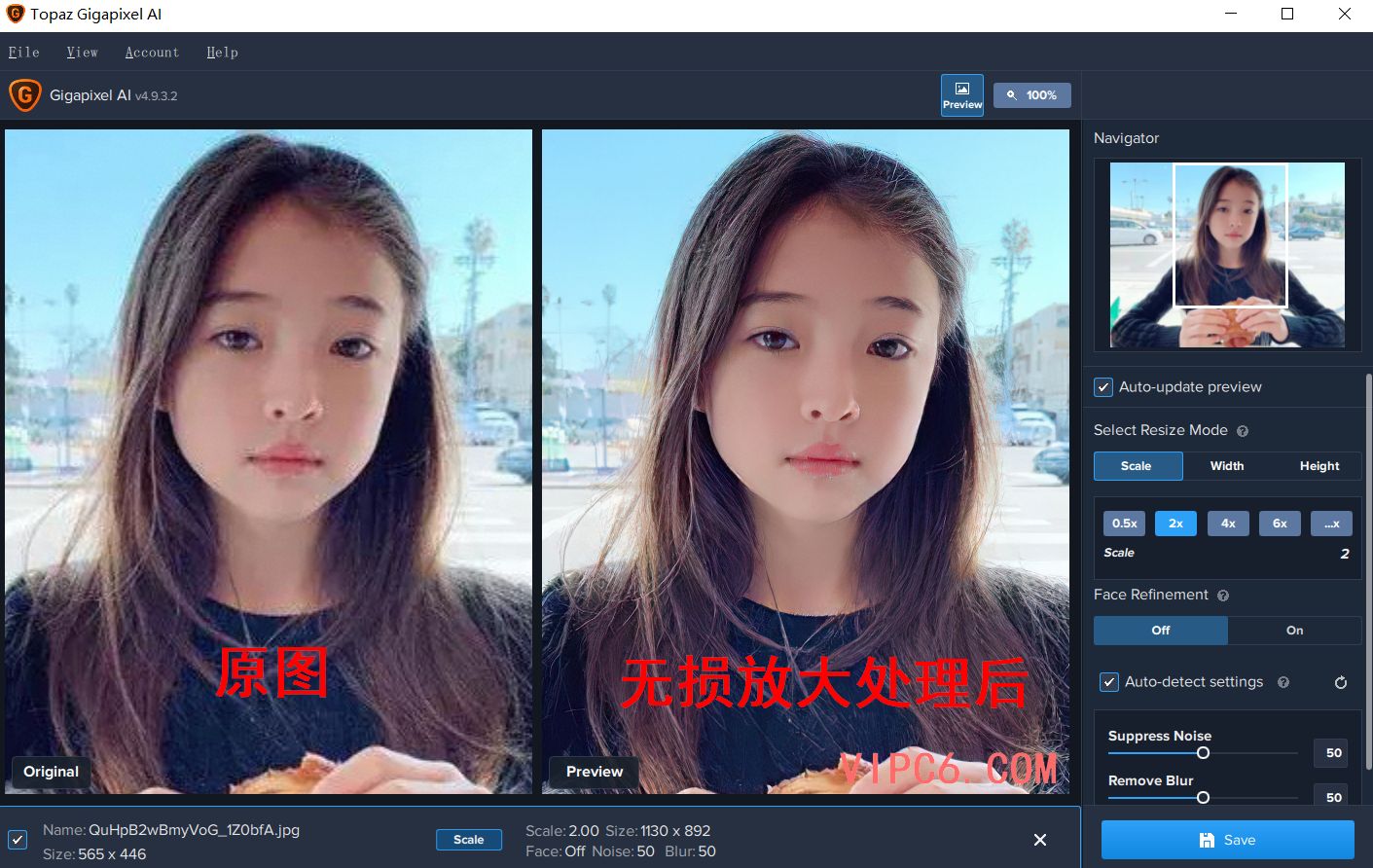
However, this image is good to set a floor quality for Gigapixel AI. I did take it with a mobile phone while on a boat (think moving platform). Keep in mind the original image quality is not great in terms of professional photography standards. On the other hand, when you zoom in to the same area on the upscaled photo, it looks painterly. Before image.Īnother thing I noticed is when you zoom in on the original photo, it looks pixelated - as expected. But it is only noticeable when you really zoom in. I did notice halos along the horizon on the enlarged photo but there were already some artifacts in the original horizon. I was surprised by the quality it’s actually good. I enlarged the image by 600%, which is the largest size the software can produce. To test Gigapixel AI, I first used a 4032×2268 JPEG image that I photographed with my Samsung Galaxy S8. There are surely use cases it can make sense to use this tools but I would only recommend to buy them when you know the specific reason you are using them for and the trial version brings you exactly the expected result.Here’s My Topaz Gigapixel AI Review Test Results

Also you have to adjust the settings for every single image. I don't deny gigapixel ai can increase the quality of your images, but it's a slight bump in quality and you have to check every picture closely to see if it made it worse or unnatural. It can change the form of the typo or replace one letter with another or your letters look like an artwork and not like letters anymore. I tested gigapixel ai lately and it's completely unusable when you have any kind of written letters in your picture. Also it's possible that in a year another competitor is might far ahead. After that you are using outdated software. There a ton of changes in this technology and you only get free updates for one year. Sharpen and gigapixel ai are based on ai. For noise reduction I would choose dxo pure raw


 0 kommentar(er)
0 kommentar(er)
